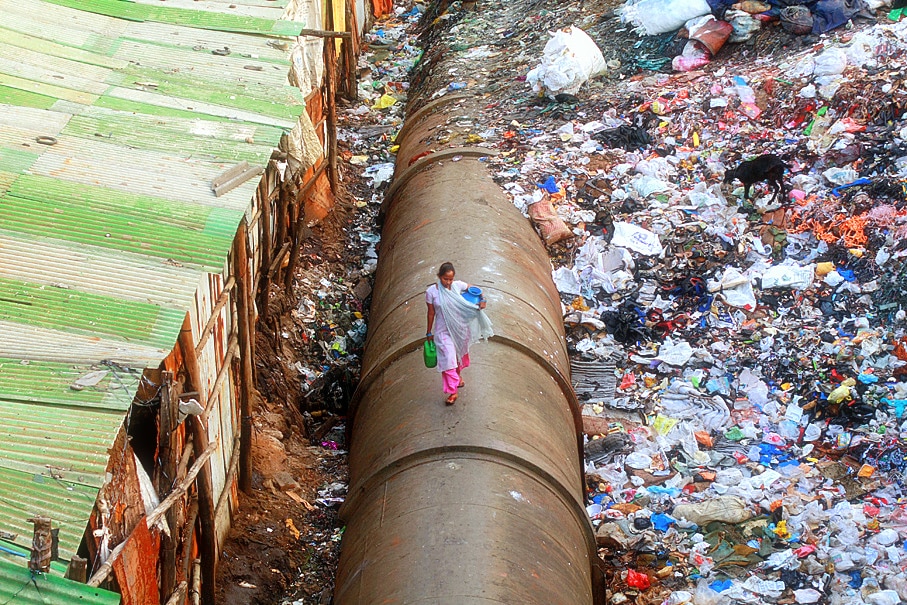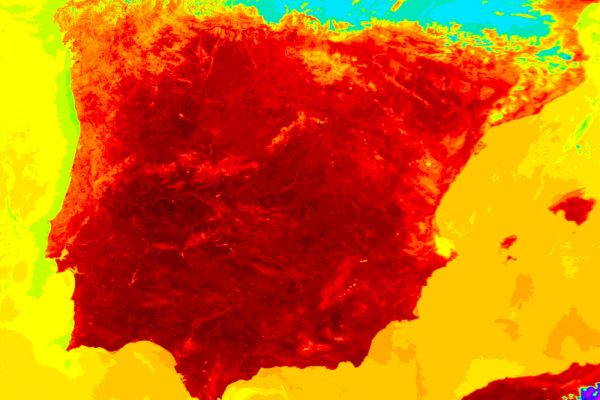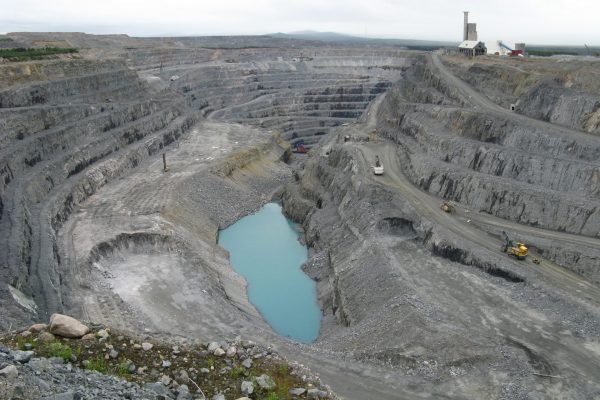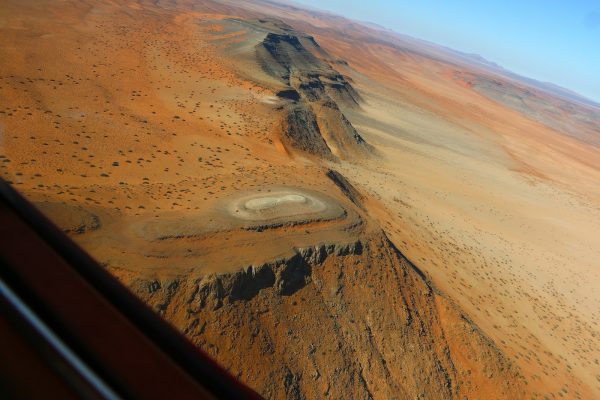When Hurricane Harvey began dumping tens of trillions of gallons of rain on southeast Texas, commentators in the media focused on the unprecedented nature of the storm: it was, they emphasized, the most extreme rain event in U.S. history. Similarly, as Hurricane Irma barreled towards Florida, it splashed headlines as the most powerful storm ever recorded in the Atlantic. But Harvey and Irma have not been the only climate catastrophes in the past month. In mid- to late-August, particularly severe monsoon rains drenched much of South Asia, killing over 1,200 people, flooding over one third of Nepal and Bangladesh, and displacing tens of millions of people. Yet the western media was almost entirely silent about this parallel calamity in South Asia. Climate-related disasters that affect the world’s most vulnerable people are often blotted from public discourse in the wealthy nations, and this neglect says a great deal about how effectively (or ineffectively) we will cope with the coming climate chaos.
Weather systems, after all, do not respect national boundaries. In fact, they depend on globe-spanning flows to build their immense energies. But our outlook on the ferocious squalls that are skittering across the globe is remarkably parochial. When a hurricane like Irma forms in the warm waters of the Atlantic and traverses the Caribbean before striking the North American mainland, the U.S. media only glancingly acknowledges the impact on weaker nations. There is seldom any allusion in such fleeting accounts to the history of imperial domination and exploitation that has rendered nations in the U.S. orbit vulnerable to so-called natural disasters.
The global majority who are least responsible for carbon emissions are suffering the most from climate chaos, but their plight is blotted from public discourse in the West.
So-called because “natural disaster” connotes an unpredictable calamity that falls from the stars, but as geographer Neil Smith argues natural disasters are actually the product of all-too-tangible social inequalities. Writing after Hurricane Katrina struck New Orleans, Smith suggested there is no such thing as a natural disaster: “In every phase and aspect of a disaster—causes, vulnerabilities, preparedness, results and response, and reconstruction—the contours of disaster and the difference between who lives and who dies is to a greater or lesser extent a social calculus.” The inequalities of global capitalism are no longer simply characterized by uneven and combined development. As we inhabit an epoch of increasingly perilous climate chaos, global capitalism is characterized by uneven and combined disaster. The apocalypse is not a singular, instant event, but it is “unfolding in slow motion with sudden leaps and storms,” as cultural theorist Evan Calder Williams wrote, with zones of breakdown spreading like irregular sinkholes across the terrain of capitalist societies the world over. As Junot Díaz warned in this journal after the 2010 earthquake in Haiti, “Haiti’s nightmarish vulnerability has to be understood as part of a larger trend of global inequality.”
The insularity with which climate-related disasters are treated is thus a major impediment to how we deal with climate chaos. The term Anthropocene Age, for example, which was popularized by the atmospheric chemist Paul Crutzen, refers to the deep impact of human behavior on the Earth’s atmospheric system, an impact so marked as to constitute a new geological epoch. Yet the Anthropocene’s universalizing framework, with its reference to an undifferentiated humanity, obscures the relatively small number of people who have historically benefitted from carbon emissions. In the past as in the present, the fossil capitalism that is driving planetary ecosystems toward a mass extinction event was adopted for the profit of a miniscule but powerful global elite.
The great global majority who are least responsible for carbon emissions are suffering the most from climate chaos. To consider these issues in any depth would be to broach vexing questions about the uneven global impact of climate change and about the viability of an economic system—fossil capitalism—that is predicated on ceaseless expansion on a finite planet.
As climate chaos unleashes its uneven and combined disasters, its impact is particularly apparent in big cities. Two great tides are converging on the world’s cities today, and as a result, we are seeing one of the greatest threats to the sustainability of urban existence. The first of these is a human tide. In 2007 humanity became a predominantly city-dwelling species. Of the approximately 7 billion humans currently living, 3.3 billion live in cities. But if the human condition is now an urban one, this urban humanity is not spread evenly across the world’s cities.
Although urbanists in the Global North often regard urbanization through the lens of city-building processes in Europe and North America, most of today’s urban population lives in the developing world. These city-dwellers are often refugees from policies of agricultural deregulation and financial liberalization—policies that have pushed millions of peasants off the land and into slums in the largely deindustrialized urban conglomerations of the Global South. This bitter harvest of the worldwide agrarian crisis has been one of the largest transformations in human history. The neoliberal world order has generated forms of extreme urbanization rooted in inequality. In the cities of the Global South, one third to a half of the urban population lives in informal settlements. Residents of these unplanned zones face highly difficult conditions in their struggle to survive. As Mike Davis put it, “Instead of cities of light soaring toward heaven, much of the twenty-first century urban world squats in squalor, surrounded by pollution, excrement, and decay.”
Global capitalism is no longer simply characterized by uneven and combined development, it is characterized by uneven and combined disaster.
The hazardous nature of what Davis calls slum ecology is a key element of contemporary urbanization. The only land available to the poor tends to be located in the most disaster-prone precincts of cities, on terrain that has not been developed because of the natural perils—from landslides to floods—that make it unsuitable for elite habitation. Right now, as flood waters recede in India, Bangladesh and Nepal, UNICEF estimates that 16 million children are still in urgent need of life-saving support such as clean water and hygiene supplies to prevent the spread of disease. Thousands of people in Bangladesh alone are dealing with water-borne diseases, including outbreaks of diarrhea, malaria and dengue fever. This vulnerability to environmental disasters is an extension of the harsh social calculus that drives them to live in dangerous sites in the first place.
And it is not an isolated incident. Nearly two-thirds of the world’s cities with more than 5 million inhabitants are partially located in low-elevation coastal zones, where they are subject to ever more frequent and intense cyclones and coastal storms catalyzed by climate change. Compounding the threat of rising sea levels, the land on which most coastal cities are built is simultaneously sinking in a process known as subsidence. Such subsidence was directly responsible for the devastating impact of Hurricane Katrina on New Orleans, but it is a process unfolding around the world in fast-urbanizing river deltas. From Egypt’s Nile delta to China’s Yellow River delta, more than 500 million people currently live in the world’s river deltas, which are subsiding at an alarming rate of 10 centimeters or so a year. Over the past decade, 85 percent of the world’s major river deltas experienced flooding, killing hundreds of thousands of people.
In tandem with this process of subsidence, coastal erosion is destroying the natural barriers that protect cities from increasingly severe storms and their surge waters. This convergence means that increasing numbers of the world’s coastal cities will soon fall below sea level. As the drowning of Houston has so poignantly underlined, coastal cities the world over face a future of ongoing systemic crisis as a result of climate change. Tropical storms and cyclones currently affect 1.4 billion people each year, 24 percent of the world’s contemporary urbanized population. But that number is projected to double by 2050. The areas most prone to such disasters extend in a band across the planet’s tropics, including urban regions in Central America, the Caribbean, the Bay of Bengal, China, and the Philippines. In this urban “tropics of chaos,” the calamities that befall slum dwellers must be seen not as “natural” disasters, but as anthropogenic climate disruptions in which uneven development and social inequality play a key role.
The catastrophic climax is not unfolding in the Global South alone. The threat posed by climate change to wealthy nations is real, present, and escalating. Perhaps the starkest warning of the mayhem to come was the European heat wave of 2003 when unrelenting temperatures—over 100 degrees even at night—caused stagnant air to mix with pollutants, creating a kind of toxic smog. An estimated 70,000 European city-dwellers died from the heat wave that summer, a figure that dwarfs the 1,800 deaths from Hurricane Katrina in New Orleans.
Our great reckoning with the planetary ecocide caused by the fossil capitalist system will come above all in the world’s cities.
More visibly, rising sea levels will affect many of the world’s powerful global cities, the key command-and-control nodes of the global capitalist economy. Most of these metropoles happen to be port cities, a fact largely ignored in the literature on the global city. The United States for example has eight key global cities: New York, Los Angeles, Chicago, Boston, San Francisco-Oakland, Washington, D.C., Miami, and Philadelphia, all lying in coastal zones (Chicago is located on the inland coast of Lake Michigan). Rising sea levels and intensifying storms threaten almost all of them.
In global terms, the top ten cities whose populations are exposed to natural disasters today are almost evenly split between developed and developing countries: Mumbai, Guangzhou, Shanghai, Miami, Ho Chi Minh City, Kolkata, Greater New York, Osaka-Kobe, Alexandria, and New Orleans. In terms of imperiled economic assets, however, the list tilts heavily toward the Global North, with Miami, Greater New York, New Orleans, Osaka-Kobe, Tokyo, Amsterdam, Rotterdam, Nagoya, Tampa-St. Petersburg, and Virginia Beach topping the list. Although these cities contain 60 percent of threatened economic assets, they are located in only four countries: the United States, Japan, the Netherlands, and China. There will be extremely grave ramifications for the global economy if any of them are seriously damaged by the storms to come. It is projected that the threat to these cities’ wealth will multiply tenfold by 2070, while the total population exposed to natural disasters could triple to around 150 million people. These statistics highlight the fact that vulnerability to extreme weather is not simply a result of the exposure of masses of people to hurricanes, cyclones, and droughts, but a product of the complex interplay of populations, infrastructures, economic and political institutions, and anthropogenic climate change.
As we are already finding out, our great reckoning with the planetary ecocide caused by the fossil capitalist system will come above all in the world’s cities. If today’s cities are one of the major drivers of climate chaos, they are also its principal victims. This global convergence of urbanization and climate change has created the “extreme city,” urban spaces with stark economic inequality where the most important struggle for human survival will take place. How a city copes with stratifications of race, class, and gender (or how such inequalities are left to fester) has everything to do with how well it will weather the storms that are bearing down upon humanity.






